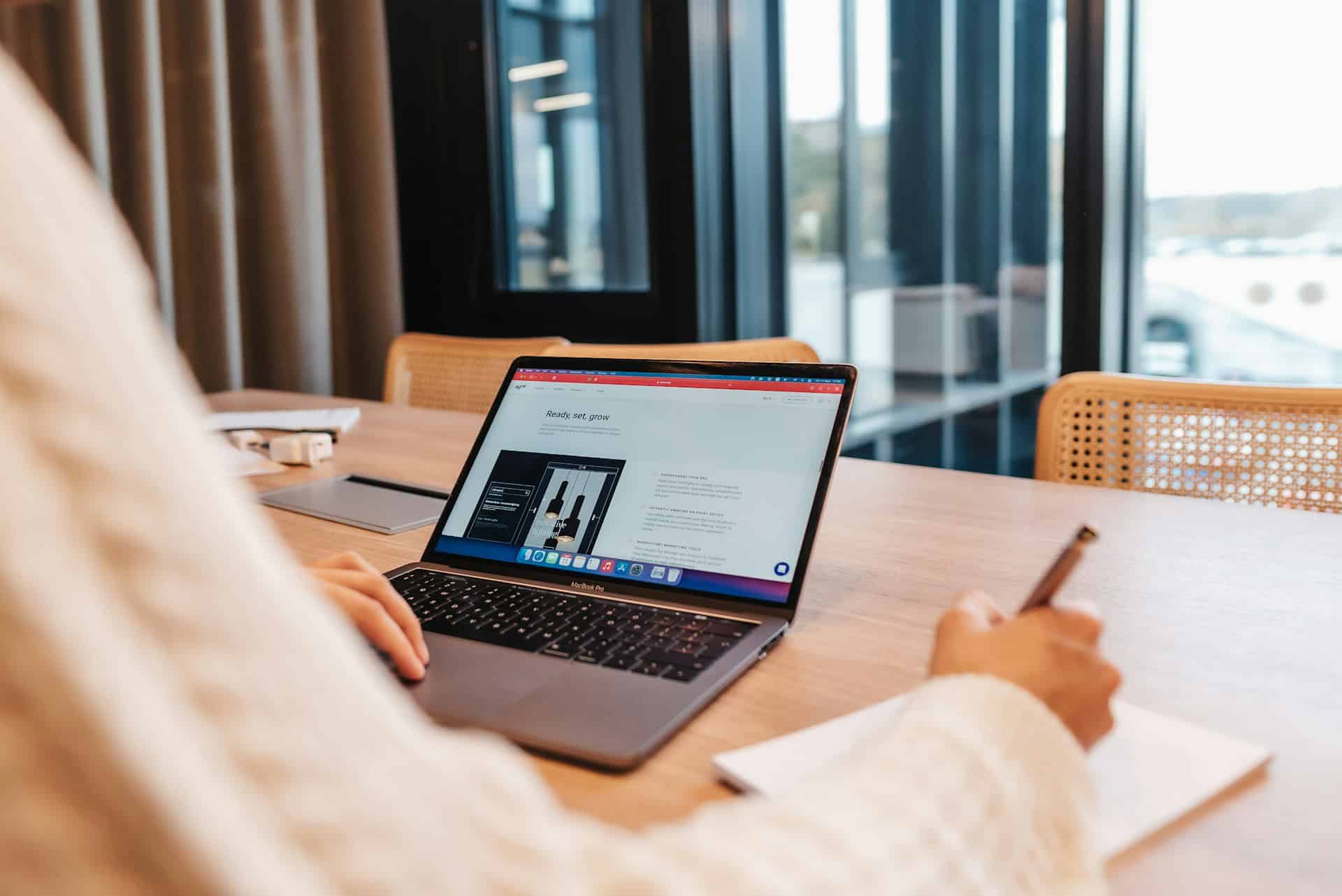A well-designed website is crucial for any business aiming to capture visitors and turn them into loyal customers. Effective website design plays a big role in making a good first impression and ensuring users find what they’re looking for quickly and easily. This can lead to increased engagement and higher conversion rates.
These elements help your site rank higher in search results and improve overall visibility. By focusing on these key areas, you can create a website that looks great and performs exceptionally well, driving better business outcomes.
Focus on Clean and Simple Design
A clean and simple design is essential for any website to engage visitors. Users can feel overwhelmed and frustrated when a site is cluttered, leading them to leave quickly. To avoid this, focus on a minimalist approach, highlighting your main content and messaging.
Start by choosing a straightforward layout that makes navigation easy. Menus should be clear, with logical categories that lead users to what they’re interested in. White space is your friend; it ensures your website doesn’t feel cramped and makes your content stand out.
Use a consistent colour scheme that complements your brand identity. Avoid using too many colours, which can make your site appear unprofessional. Stick to two or three primary colours and complement them with neutral tones like white, grey, or beige.
Font choice matters as well. Select fonts that are legible across all devices and screen sizes. Sans-serif fonts often work best for digital platforms due to their clean lines and modern look.
Images should enhance your content without distracting. Choose high-quality visuals that are relevant and add value to your messaging. Avoid cluttering pages with too many images, which can slow down your site and confuse users.
Focusing on clean and simple design can create a visually appealing website that enhances user engagement and reinforces your brand.
Prioritise Mobile Responsiveness
Mobile responsiveness is no longer optional, with more people browsing on their phones and tablets. A responsive website adapts to different screen sizes, ensuring a seamless experience for users regardless of their device. Your site should look and function well on desktops, tablets, and smartphones.
To achieve mobile responsiveness, start with a responsive design framework. This framework automatically adjusts layouts and elements according to the device’s screen size. Use flexible grids and layouts that allow for the smooth reconfiguration of your site’s content.
Images and videos can impact mobile performance if not optimised. Ensure they resize according to the screen dimensions without losing quality. Consider using tools that compress file sizes without compromising clarity and loading speed.
Touch-friendly navigation is crucial. Buttons and links need to be large enough for users to tap easily without accidentally clicking other elements, and drop-down menus should be easy to open and close with a single touch.
Test your website on various devices and screen sizes. Regular testing helps identify potential issues that can be resolved before they affect the user experience. Use tools that provide previews of how your site looks on different devices.
By prioritising mobile responsiveness, you ensure that every visitor to your site, no matter how they access it, enjoys a smooth, engaging experience, which increases the likelihood of conversions and return visits.
Enhance User Experience with Fast Loading Times
Fast loading times are critical to keeping users on your website. A slow website frustrates visitors and can lead them to leave before seeing your content. This affects user experience and your website’s ranking on search engines like Google, as speed is a known ranking factor.
To improve your website’s loading speed, start by optimising images. Large images can slow down your page, so use tools to compress them without losing quality. Select the right file formats, such as JPEG for photos and PNG for graphics with fewer colours.
Minimising the use of heavy scripts and plugins helps, too. Review all the plugins on your site and remove any that are unnecessary or that you no longer use. Every plugin adds time to your load speed; streamlining these can make a big difference.
Use browser caching to store some of your website’s resources locally on users’ devices, speeding up load times for returning visitors. Implementing content delivery networks (CDNs) also distributes your content across multiple servers worldwide, helping reduce the time it takes for users to access your site.
Regularly test your site’s speed using tools like Google’s PageSpeed Insights or other speed test services. These tools show how fast your site loads and provide actionable tips on where you can improve. Paying attention to your website’s loading speed enhances user experience, lowers bounce rates, and potentially increases conversions.
Implement SEO Best Practices for Better Visibility
Improving your website’s visibility through SEO is essential for attracting more visitors and increasing your reach. SEO best practices involve optimising various elements of your site so that search engines understand and rank it higher.
Start with keyword research. Identify relevant keywords that your target audience is likely to use. These should be naturally integrated into your content, meta descriptions, and headers. Avoid keyword stuffing, as it can harm your site’s ranking.
Optimise your website’s on-page elements, such as title tags, meta descriptions, and URLs. Title tags should be unique and descriptive, giving users and search engines an idea of the page content. Meta descriptions are snippets displayed in search results that should entice users to click through to your site.
Create high-quality content that provides value to your audience. Regularly update your website with fresh and relevant content that answers questions or solves problems for your visitors. Use internal linking to guide users to other helpful pages on your site, which can also improve your SEO by spreading page authority.
Ensure your site is mobile-friendly since search engines prioritise mobile-optimised sites. A mobile-responsive design ensures users on any device can easily navigate your content.
Finally, keep an eye on your analytics. Use tools to understand how people find and interact with your site, then adjust your strategy accordingly. Implementing these SEO practices improves your site’s chances of appearing in top search results, driving more traffic and potential customers.
Conclusion
Focusing on website design and functionality can greatly impact how users experience your brand online. Clean, simple designs paired with fast loading times keep visitors engaged and exploring. Prioritising mobile responsiveness ensures all users have a positive experience, regardless of their device. By implementing SEO best practices, you boost your online visibility and attract more visitors to your site.
Improving these elements transforms your website into a powerful tool for connecting with your audience and achieving your business goals. Regular maintenance and updates are crucial for staying ahead in the evolving digital landscape. Focus on continuous improvement and keeping your content fresh and relevant to maintain interest and drive growth.
Ready to elevate your online presence? Titan Blue Australia offers expertise in creating optimised website designs in the Gold Coast that engage users and convert visitors into customers. Whether you need help with website design, loading times, or an SEO strategy, our team supports your goals. Contact us today to see how we can work together to enhance your digital success.




